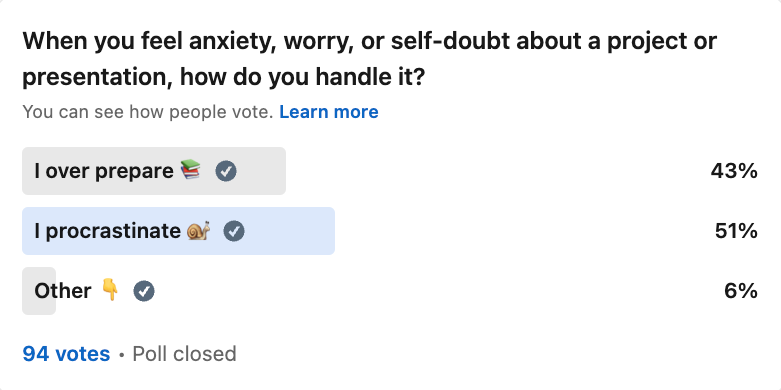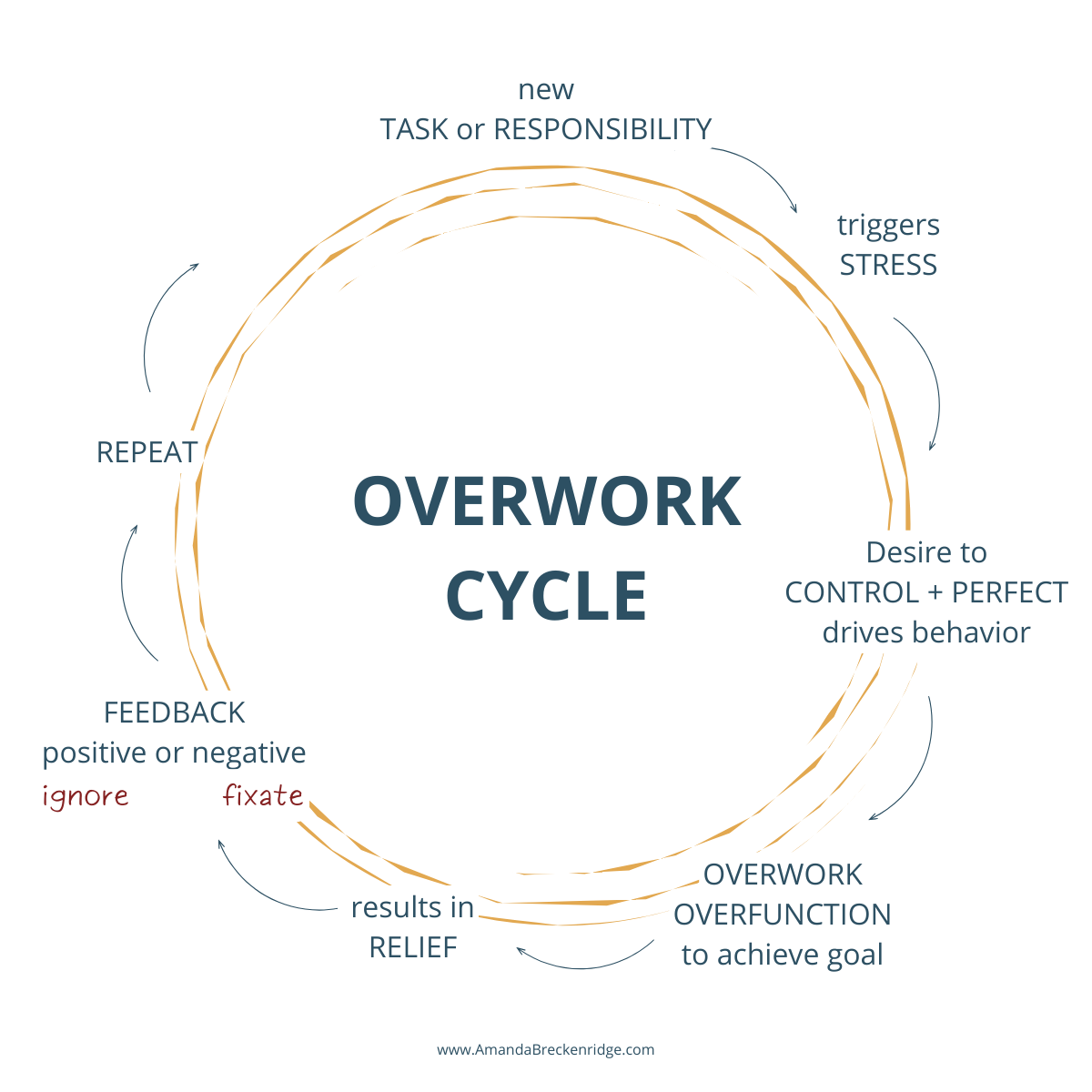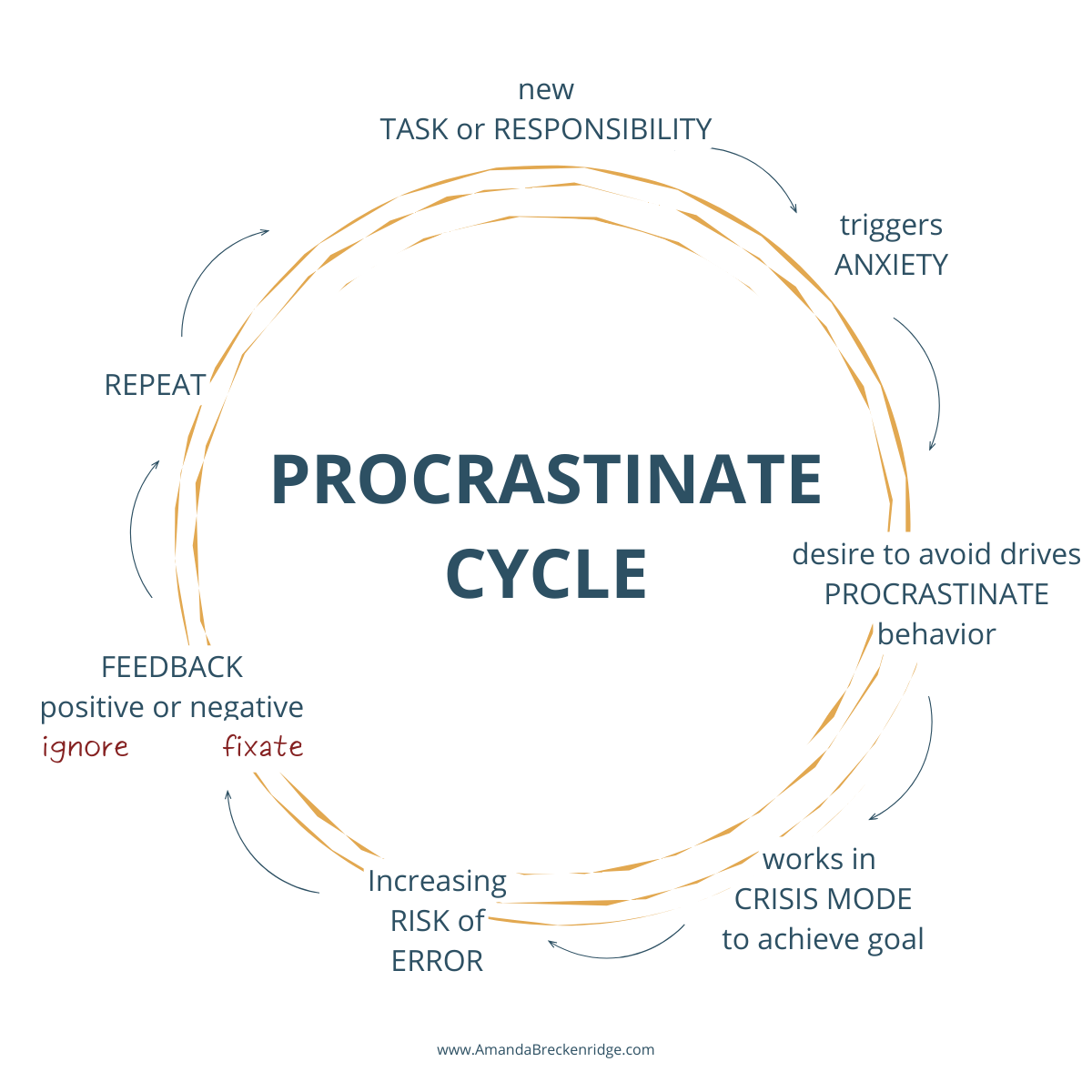How to Break the Cycles Leading to Imposter Syndrome
Recognize your pattern and use these tools to stop it
Hi Friend!
Every single person, regardless of perceived success, has felt the fear of not being enough or not having the answer, coupled with the worry that others will eventually find out they’re not as capable or as smart as they thought.
Throughout my career, I’ve encountered these types of limits.
At Twitter, as the first executive in the sales organization with peers who were a decade my senior, I constantly worried whether my knowledge or experience was sufficient.
At Change.org, I showed up with curiosity about the value I could bring to a social change organization making such a tremendous impact, but I also felt insecure about it.
And at LinkedIn, I questioned my ability to operate successfully as an executive within a large, public company.
I’ve now coached over 110 founders, CEOs, and senior executives, and I can tell you with absolute certainty: we all experience some degree of Imposter Syndrome.
The impact on those who perpetually struggle with it, however, is uniformly negative—from the anxiety and stress it generates to the inefficiencies and self-fulfilling prophecies it engenders.
This article is all about helping you recognize your pattern and giving you the tools to break it.
Reflective Prompts
To gain insight into your experience, here are three prompts to help you connect with your cycle of Imposter Syndrome, your triggers, coping mechanisms, and the impact on your work and personal life.
Reflect on a recent time when you felt like an imposter at work or in a personal endeavor. What specific event or interaction triggered these feelings? What were your initial thoughts and reactions? How did this event relate to previous times when you’ve felt similar doubts?
Think about how you typically respond when you feel like an imposter. Do you tend to overwork, procrastinate, or engage in another specific behavior? What was the outcome, and how did it affect your efficiency and well-being?
Consider the broader effects of Imposter Syndrome on your life and career. What changes would you like to make to reduce the negative impacts?
A Metaphor
When I work with clients struggling with Imposter Syndrome, I often share a powerful parable told by the Buddha, which captures the essence of emotional reactivity. In the story, the Buddha asks:
“If you get struck by an arrow, do you then shoot another arrow into yourself?”
This question highlights our tendency to exacerbate our own suffering.
When you receive criticism or make a mistake, it hurts. That’s the first arrow. First arrows are often inevitable and part of our human experience.
However, your response to the first arrow often involves a reactive mental and emotional process that, despite its protective intention, is self-destructive. This reaction is the second arrow.
Whether it manifests as overworking to prove your worth or procrastinating due to your fear of failure, this second arrow does not support your ultimate goals and only adds to your distress.
The solution lies in recognizing and stopping this second arrow.
It’s about noticing your automatic reactions and choosing not to exacerbate your suffering with unhelpful behaviors.
The Cycles of Imposter Syndrome
Imposter Syndrome often begins with a triggering event. The trigger could be something like:
Stepping into a new role
Doing something you’ve never done before
Taking on a bigger goal or challenge
Making a mistake
Experiencing a perceived failure
Feeling like you don’t belong
Triggers can be positive or negative and lead to one of two cycles: Overwork or Procrastinate.
The Overwork cycle is a stress-based response, aiming for control and perfection. The Procrastinate cycle is a fear- or anxiety-based response, that uses avoidance to cope.
I ran an informal LinkedIn poll to gauge where leaders in my network fall. I asked:
When you feel anxiety, worry, or self-doubt about a project or presentation, how do you handle it?
The poll received 94 votes and here’s how it split:
People who indicated “Other” expressed that they do both. But I suspect it’s really the Procrastinate cycle that plays out. The overworking that happens is a consequence of procrastination.
Here’s how each cycle functions, the neuroscience behind it, and strategies to overcome it.
Overwork Cycle
New Task/Responsibility: You receive a new task or responsibility, possibly high-stakes or outside your comfort zone.
Trigger: Something in the task heightens your stress, such as an unexpected challenge or high expectations.
Control + Perfect: You aim to “get everything right” and minimize mistakes to cope with the pressure of being exposed.
Overcompensate: You overwork or overfunction, putting in extra hours or effort beyond what is required.
Feedback: Upon completion, you receive feedback.
Positive: You dismiss the praise, attributing success to external factors like luck, or you focus on minor errors.
Negative: You dwell on this feedback, reinforcing your belief that you aren’t good enough.
Repetition: The cycle repeats with each new task, reinforcing the Imposter feelings.
The neuroscience behind overwork
The foundation of the Overwork cycle is stress. When you experience the stress to perfect and “get everything right,” your body releases cortisol. This stress hormone mobilizes your energy and focus, so you can tackle the tasks.
As tasks are completed, dopamine—the neurotransmitter linked to pleasure and reward—is released. This can become addictive, compelling you to continue working and chasing those dopamine highs, often at the cost of your health and well-being.
This constant mental effort leads to overactivation of the prefrontal cortex (PFC), which handles executive functions like decision-making, planning, and moderating behavior, as well as being involved in error detection and perfectionism, reinforcing the cycle of overwork.
However, chronic stress and continuously elevated cortisol levels can lead to impaired cognitive function, negatively impacting the hippocampus—responsible for memory and learning—and the PFC itself. This degradation in cognitive function can result in mood disorders such as anxiety, depression, and mood swings, which can reinforce overworking as your coping mechanism.
To make matters worse, your physical health also suffers, as chronic stress can lead to immune suppression and cardiovascular issues.
To address Imposter Syndrome, you have to break the cycle of overworking.
Strategies to break the overwork cycle
Mindfulness, Meditation, and Breathwork: I list these practices first because they focus on reducing stress and lowering cortisol levels. Regular meditation and breathwork can help you detach from work-related stress and manage your physiological responses more effectively.
Develop a Practice of Self-Compassion: Acknowledge your efforts and affirm your value beyond your productivity. Recognize that striving for perfection and overworking are not sustainable.
Manage your Automatic Negative Thoughts (ANTs): Grow your awareness around the type of negative thoughts you have, look for evidence that contradicts them, replace the negative thoughts with more balanced, realistic ones, and remember that you are not your thoughts. You’re simply the observer of your thought process.
Set Boundaries and Prioritize: Establish realistic work schedules and stick to them. Practice saying “no” or “later” to tasks that aren’t immediately necessary. Prioritizing your tasks based on importance and urgency helps reduce the pressure that triggers overworking.
Shift from External Validation to Intrinsic Reward: Focus on finding value and satisfaction in your accomplishments for their own sake rather than seeking external approval. This shift helps decrease the reliance on continuous work for validation and encourages a healthier relationship with your professional achievements.
Prioritize Sleep and Take Meaningful Breaks: Return to the basics of well-being by ensuring you get adequate sleep, which is necessary for cognitive function and overall health. Make sure your breaks are truly restorative. Stretching, taking short walks, or sitting quietly allow you to recharge without the stimulation of devices or caffeine.
Procrastinate Cycle
New Task/Responsibility: You receive a new task or responsibility, possibly high-stakes or outside your comfort zone.
Trigger: Fear of not being good enough or uncertainty about how to proceed sparks anxiety.
Avoid: You procrastinate, avoiding the task as a way to cope with the possibility of failing or being exposed.
Crisis Mode: As deadlines loom, you shift into high gear, working intensely to catch up, often under immense stress.
Increased Risk of Errors: Rushed work heightens the likelihood of mistakes, adding to stress and perceived inadequacy.
Feedback: You receive feedback on your performance.
Positive: You struggle to internalize success, feeling it was unearned or a lucky result of last-minute effort.
Negative: You fixate on this feedback, berating yourself or overcorrecting future efforts.
Repetition: The cycle perpetuates, with each new task or responsibility triggering similar responses.
The neuroscience behind procrastination
Procrastination is fundamentally rooted in fear—the fear related to your performance. When faced with a task that evokes this anxiety, your natural response is to avoid this negative emotion. Avoidance becomes your coping mechanism.
Imagine a tug-of-war between your limbic system (your emotional brain), which includes the amygdala responsible for the fight, flight, or freeze response, and your prefrontal cortex (your executive function).
When anxiety activates your limbic system, it compels you to sidestep the immediate discomfort by engaging in activities that provide short-term gratification, such as ticking off less critical tasks or succumbing to your usual distractions. While these activities may offer temporary relief, they ultimately heighten long-term anxiety and stress.
Studies show that habitual procrastinators often have enlarged amygdalas. This enlargement can significantly overpower the prefrontal cortex, further reducing self-control and exacerbating the tendency to procrastinate.
This heightened emotional response can lead to decision paralysis and a diminished ability to prioritize tasks effectively.
To address Imposter Syndrome, you have to break your cycle of procrastination.
Strategies to break the procrastination cycle
Strengthen Your Prefrontal Cortex: Enhance your brain’s resilience against emotional override by engaging in activities that challenge your cognitive functions—problem-solving puzzles, brain teasers, crosswords, card games, etc.
Reduce Amygdala Activity: Incorporate stress-reduction practices like nature walks, meditation and breathwork into your routine. These are constantly recommended because of how effective they are at regulating your nervous system.
Slow Down: Your constant need for stimulation can adversely affect the dopamine system and diminish focus. Practice allowing yourself to be bored. This helps in overcoming the impulse to constantly check your phone, email, or engage in other work just to stay busy.
Break Tasks into Manageable Chunks: Dividing large tasks into smaller, more achievable segments can reduce the overwhelming feeling that can trigger procrastination.
Establish Uninterrupted Work Blocks: Designate specific times for focused work, free from distractions. This could mean turning off notifications and creating a quiet, dedicated workspace.
Take Meaningful Breaks: Ensure that your breaks are actual breaks, not other forms of distraction or stimulation. Opt for activities like stretching, a short walk, or a meditation session instead of scrolling through social media or grabbing an afternoon espresso.
Content Recommendations
There are numerous resources available to deepen your understanding of Imposter Syndrome.
Here are several to consider:
Pauline Rose Clance and Suzanne Imes were the first to research and coin the term “imposter phenomenon” in their seminal 1978 study: “The Imposter Phenomenon in High Achieving Women: Dynamics and Therapeutic Intervention”
Dr. Valerie Young is a leading expert on Imposter Syndrome. Her award-winning book, “The Secret Thoughts of Successful Women,” was considered groundbreaking and offers extensive insights.
Dr. Amy Cuddy, a social psychologist and Harvard professor, delivered the second most viewed TED Talk of all time in 2012, where she shares her imposter story and explores the relationship between Presence and Imposter Syndrome as two sides of the same coin.
For insights on how workplace culture must also address Imposter Syndrome, I recommend following the work of
and and Lisa Orbé-Austin.
The Challenge
Now that you understand the intricacies of Imposter Syndrome, take a moment to again reflect on your own experience, triggers, and cycle.
Choose one strategy from those discussed to disrupt your cycle.
I’d love to know in the comments or as a reply to this email what you’ve chosen to work on and the strategy you’ve committed to try.
Final Note
I wish you all the best in your efforts. You’re not alone.
Remember, the goal is not to be perfect. It’s to recognize and avoid the second arrow.
- Amanda
Interested in exploring my coaching practice?
If you’d like to learn more about breaking your cycle of overwork or procrastination, I offer a complimentary discovery session to assess fit. I’d love to hear from you.








I feel seen by the way you break down the procrastinate cycle. I can do better with uninterrupted work blocks and meaningful breaks. Challenge accepted!